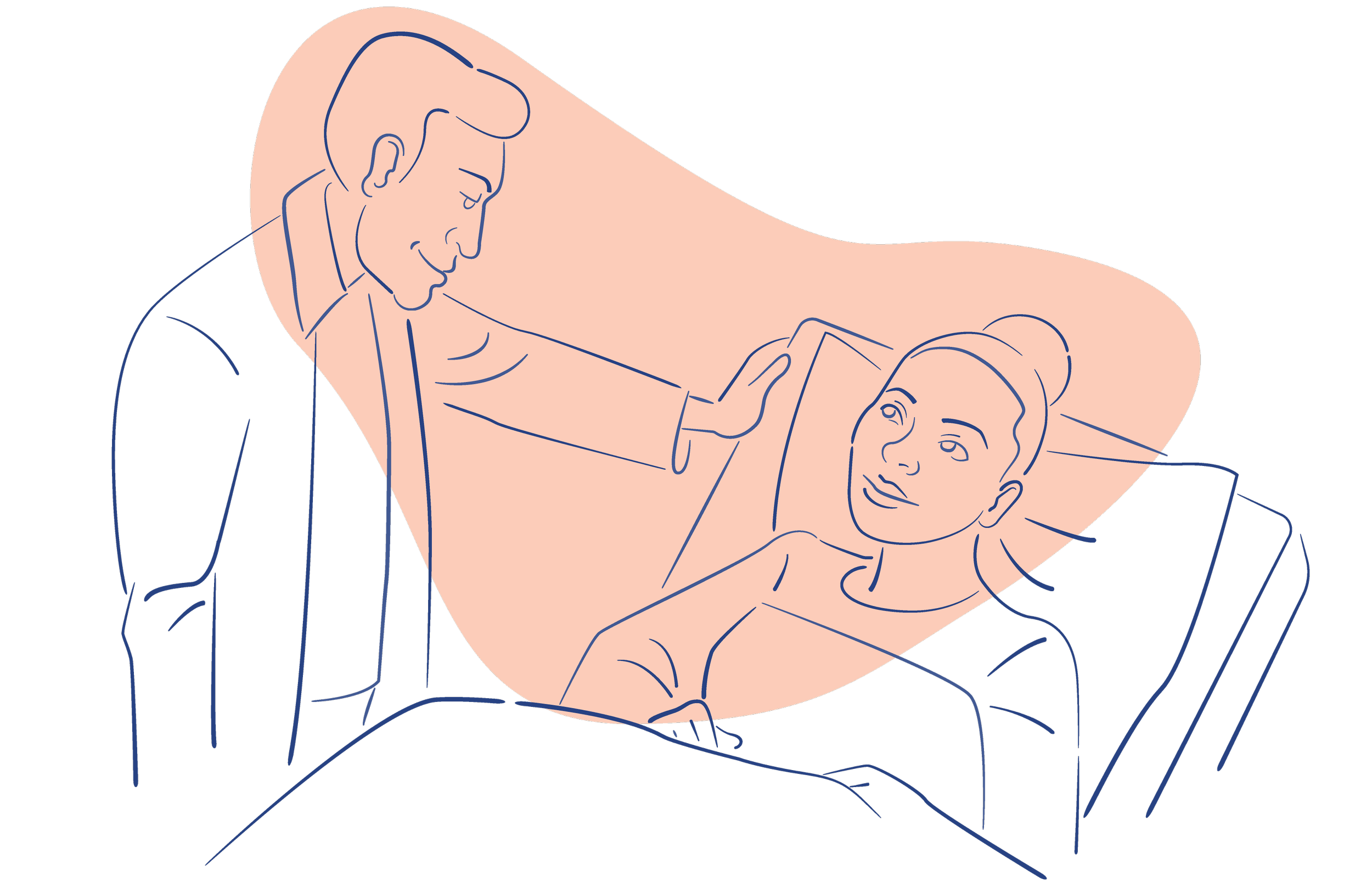
Fibroid Symptoms don’t take days off
LET’S CHANGE THAT
What Is the Acessa Procedure?
The medical term for the Acessa procedure is Laparoscopic Radiofrequency Ablation (Lap RFA). A treatment does is deliver heat directly into a fibroid in order to treat the tissue and in turn, relieve your symptoms.
A Targeted Solution for Fibroids
The Acessa® procedure works by applying controlled heat directly into the fibroid. This causes it to shrink over time (imagine the consistency of a hard baseball changing to a soft marshmallow).
6 Steps to Fibroid Freedom
You’ll be brought into the operating room for anesthesia
Next your physician deploys the tip of the Acessa handpiece into the fibroid and only the fibroid
After you’re asleep, your physician will make a minimum of three small incisions for a camera, ultrasound, and Acessa handpiece
Controlled heat will destroy fibroid tissue. The heat shrinks the tissue mass into a fibroid into a soft mass that is absorbed by the body over time. Your physician will repeat this process until every targeted fibroid is treated
Your physician uses a special ultrasound directly on the uterus that allows them to find and ultimately treat more fibroids than other standard imaging methods
After surgery, most patients get cleared to go home the same day, and return to work in 4-5 days.3 Most women experience relief in the first 3 months, and continual improvement for 12 months.
Is the Acessa Procedure Right for Me?
If you’re not planning to have children in the future, the Acessa procedure might be a good option for you. And since it’s not major surgery, you can get back to life faster.
Most patients get cleared to go home the same day.
Women are usually ready to return to work after 4-5 days.
What You Can Expect
In terms of when you will see symptom relief, it depends on how big the fibroid is and what symptoms you were experiencing. We’ve learned from our studies that it typically takes 3-12 months for symptoms to improve. Each fibroid is different, and each symptom is different, so the timeline truly varies from woman to woman. We know the majority of women felt the most improvement within the first 3 months after the procedure.
of women in the clinical study recommended the Acessa procedure.
98%
of women in the clinical study said the procedure helped with symptoms.
94%
Acessa FAQs
-
Many insurance companies and Medicaid carriers cover the procedure. We understand that some patients have received incorrect information from insurance call centers. We suggest scheduling an appointment with an Acessa- trained physician to discuss whether the procedure is appropriate for you. If the Acessa procedure is a match for your fibroid treatment, then your physician’s office will request insurance approval in advance by submitting a pre-authorization request.
-
The Acessa procedure can be used to treat almost all types of symptomatic uterine fibroids, including subserosal, intramural, transmural, and submucosal. The Acessa procedure should not be used on non-uterine masses.
-
In clinical studies, patients were able to return back to work within 4-5 days. Results may vary.
-
Studies show that fibroids do not have to be completely removed to resolve symptoms. Treating the fibroid cells so they shrink and stop putting pressure on the uterus may help to resolve symptoms. The data in the IDE clinical study showed even a 45.1% average shrinkage in fibroid volume can result in significant improvement in heavy periods, pelvic pain and bulk.
The Acessa procedure is designed to heat the fibroid tissue to the point that the tissue dies. The dead fibroid tissue is not harmful. It shrinks and shrivels over time and gets absorbed by the body, just like any dead tissue cell.4
-
Each procedure varies in length based on the number and size of fibroids. Typically, the entire procedure from anesthesia to waking up lasts 1-2 hours. It may take longer for more fibroids or complications. Results may vary.
-
Radiofrequency ablation has been used for decades. The idea for laparoscopic radiofrequency ablation (Lap RFA) to treat fibroids, or the Acessa procedure, was first conceived by Dr. Bruce Lee in 1999.6 The original Acessa System was FDA cleared in November 2012. Since 2012, physicians have performed over 3,500 procedures with over 48 publications. The newest, most advanced technology, the Acessa ProVu system, was cleared in 2018. “Our analysis indicates that Lap RFA is associated with low complication rates, minimal EBL, and low reintervention rates. In addition, patients reported major improvement in their HRQL and symptom severity scores compared to reports of more traditional interventions, such as hysterectomy, myomectomy, and UAE.” Havryliuk Meta Analysis JSLS 20178
-
The results of the Overall Treatment Effect Survey of the pivotal study of 124 patients showed that 94% responded that they were very satisfied, moderately satisfied, or somewhat satisfied with the treatment. At 12 months post-treatment, 98% reported that they would probably or definitely recommend the procedure to their friends with the same health problem. When asked about the effectiveness of the treatment, at least 94% responded that the treatment had been somewhat, moderately, or very effective in eliminating their symptoms. Most patients report they have significantly lighter periods and alleviated pelvic pain and pressure. Often, patients who experience “bloating”—looking pregnant having a distended abdomen from the fibroids, report reduced or eliminated bulk symptoms. However, results may vary.
-
The Acessa procedure is able to resolve many of the common fibroid symptoms, including: extreme periods, stomach swelling and bloating, leg and back pain, stomach and pelvic pain, digestive issues, anemia, pain during sex, frequent urination.
Based on our clinical data, the average reduction in menstrual blood loss was 87 mL compared to baseline periods after 3 months and reduced even further to 103.6 mL by 6 months. According to HealthLine, 103.6 mL of period blood is equivalent to reducing a period by approximately 20 tampons.
Most patients see the greatest effects 3-6 months after the Acessa procedure. However, results may vary.









